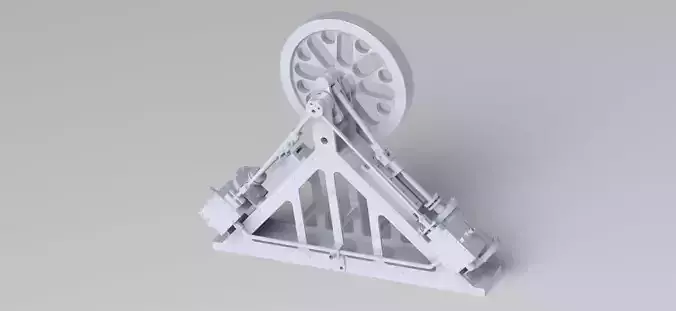1/8
A SIMPLE 2 CYLINDER DIAGONAL STEAM ENGINESOLIDWORK PART MODELLING AND ASSEMBLYSOLIDWORK MOTION STUDYSOLIDWORK SECTION VIEW #machine_animation#steamengines #letsmakeitcad#SolidWorks
A simple 2-cylinder diagonal steam engine is a type of steam engine that features two cylinders arranged diagonally to each other. This design combines elements of both vertical and horizontal engines and was often used in early steam engine applications. Here's how a basic 2-cylinder diagonal steam engine works:
Components:
Cylinders: There are two cylinders positioned diagonally, typically at a 45-degree angle.Pistons: Each cylinder contains a piston that moves back and forth within it.Crankshaft: The pistons are connected to a common crankshaft, which converts the reciprocating motion of the pistons into rotational motion.Crosshead: Connected to each piston is a crosshead that guides the piston's movement and transmits its motion to the connecting rod.Connecting Rod: The connecting rods link the crossheads to the crankshaft. They transfer the up-and-down motion of the pistons to the rotational motion of the crankshaft.Flywheel: Similar to other steam engine types, a flywheel is attached to the crankshaft to smooth out motion and store rotational energy.Working:
Steam Inlet: Steam is admitted into one end of each cylinder through a valve.Power Stroke: Steam enters one cylinder and pushes its piston away from the valve end, creating the power stroke. As the steam expands, it does work on the piston, converting its energy into motion.Exhaust: After the power stroke, a valve opens to allow the used steam to exit the cylinder.Piston Return: The flywheel's momentum and the connecting rod mechanism bring the piston back to its original position. This is the exhaust stroke.Steam Switch: Simultaneously, the second cylinder goes through a similar cycle. While one cylinder is in the power stroke, the other cylinder is in the exhaust stroke, and vice versa. This arrangement ensures a continuous rotational output.Advantages:
Compactness: The diagonal arrangement allows for a more compact engine layout, which can be useful in limited spaces.Balanced Forces: The diagonal arrangement also helps balance forces and reduce vibrations.Disadvantages:
Efficiency: Like other basic steam engines, this design might lack optimization features found in more advanced engines, potentially leading to lower efficiency.Limited Power: The power output might be limited compared to modern engine designs.The diagonal steam engine was a transitional design that aimed to address some limitations of both vertical and horizontal engines. It found applications in various industrial settings, such as factories and mills. However, as engineering knowledge advanced, more sophisticated engine designs emerged that provided better efficiency, power, and reliability. If you're interested in this type of engine, studying historical references and engineering principles will provide you with a deeper understanding of its operation and construction.
REVIEWS & COMMENTS
accuracy, and usability.








